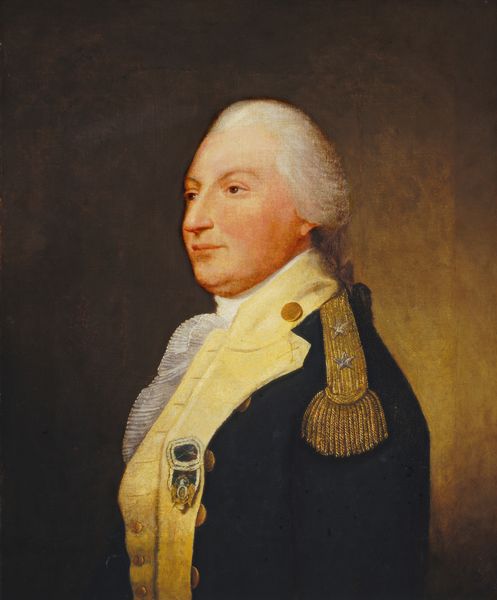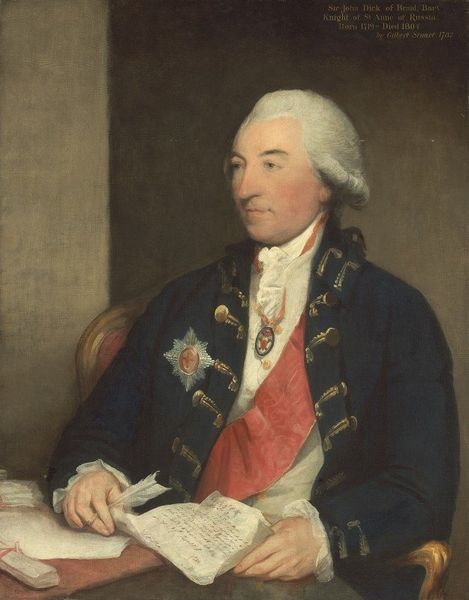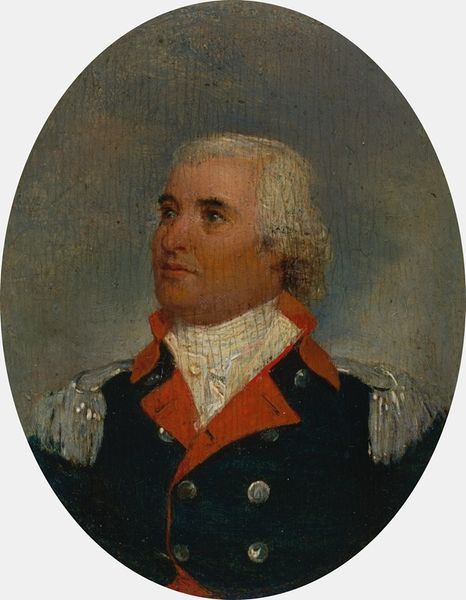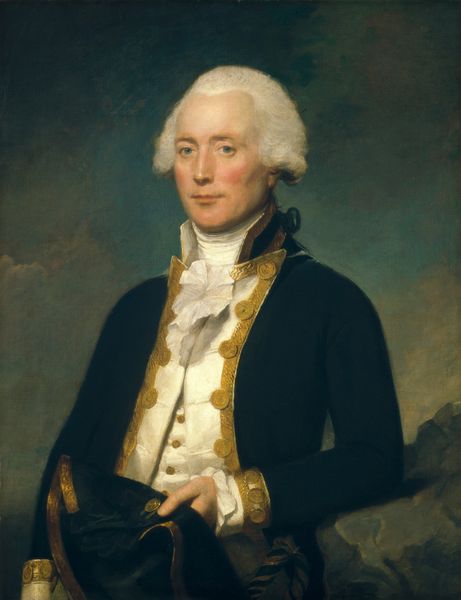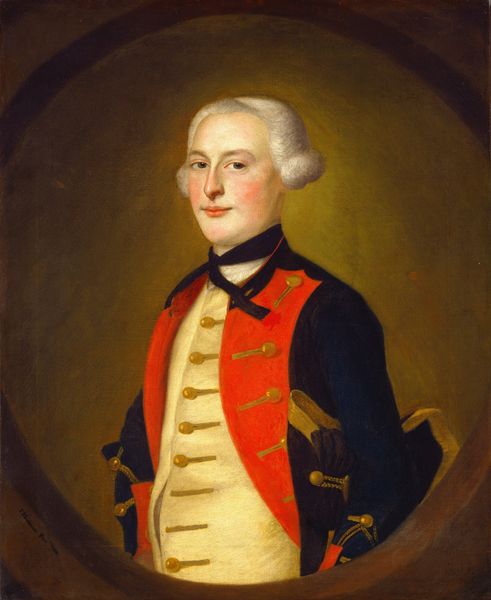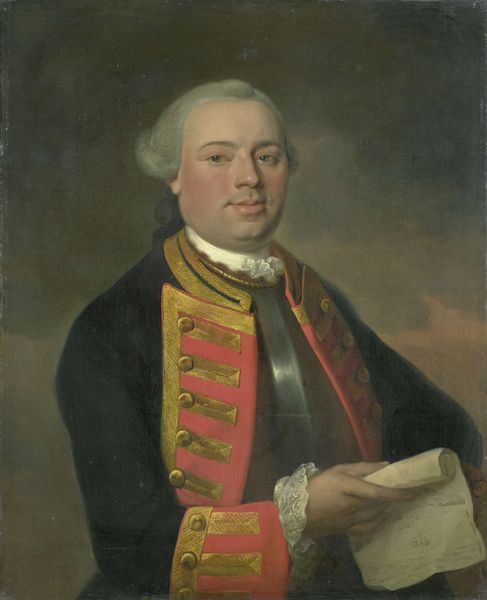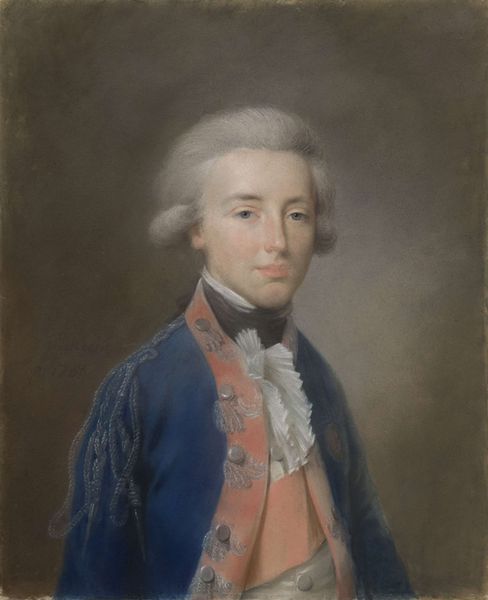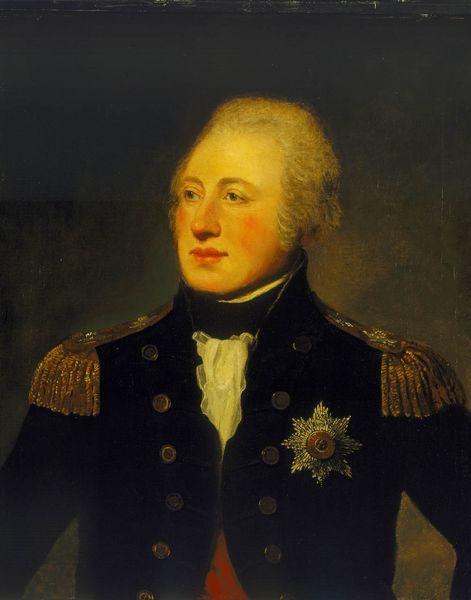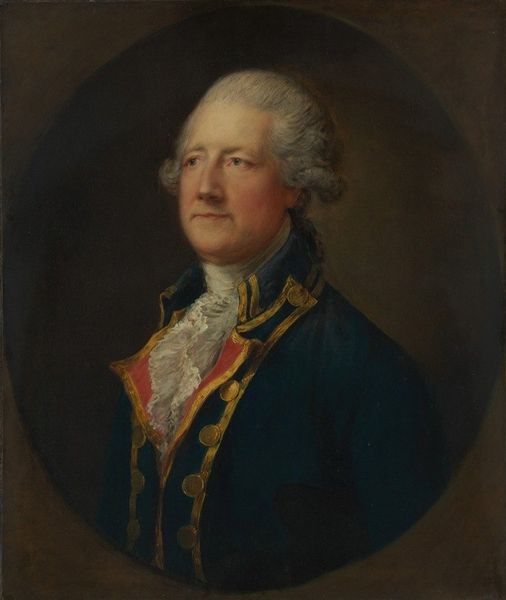
painting, oil-paint
#
portrait
#
neoclacissism
#
painting
#
oil-paint
#
history-painting
#
academic-art
Dimensions: 23 x 19 5/8 in. (58.4 x 48.9 cm)
Copyright: Public Domain
Curator: Before us is Charles Peale Polk’s oil-on-canvas portrait of "Joseph Howell, Jr.," painted sometime between 1784 and 1787. The canvas reveals not just the sitter but something of the emerging nation he embodies. Editor: He seems so… guarded, almost stoic. Those direct eyes don't give away much, do they? Makes me wonder what stories are tucked away behind that proper facade. I bet his powdered wig itches. Curator: Indeed, and considering the date, this would have been made at a very interesting juncture, not long after the end of the war, at a point when the nation and its heroes needed to solidify themselves as legitimate. That very likely influenced the aesthetic here. Look at the detail, the careful attention paid to Howell's military dress, the medal signifying merit, how the production is less about showing him, and more about building a particular, favorable narrative about him. Editor: And you know, the color palette adds to that serious mood too. The blues and reds are patriotic but subdued. It’s quite classical, but if you consider the materiality, like, who sourced the paints? Who prepared the canvas? Where was Polk even painting this? And the uniformity gives it a certain formality—it’s clear the image is about more than just Joseph Howell. The message feels… controlled, intentional, right? Curator: Exactly! Polk, working within the stylistic constraints of academic art, crafted an image of civic virtue. Even Howell's posture is significant—upright, composed. But I like what you are driving at regarding materials. When looking at pieces such as this it's critical to look beyond just "artist does this" and consider what raw materials, supply chains, or access to education makes this kind of painting possible in the first place. Editor: And that hint of blue and grey behind him in the backdrop—it feels unsettled compared to the rigid control up front. Like a little cloud in the picture. Which perhaps adds an odd layer of nuance… Curator: Absolutely. It suggests, perhaps unintentionally, the tensions that underpinned the nascent nation. The control on the surface perhaps hinting at all the hard work needed to make that vision possible. Editor: Yes! Overall, spending some time here, with Charles Peale Polk's piece has been really rewarding—revealing an official surface and the complexities of building that surface! Curator: Agreed. The work truly provides not just a portrait, but a cultural artifact ready to spark thoughts on art, materiality, and nation-building even centuries later!
Comments
No comments
Be the first to comment and join the conversation on the ultimate creative platform.

